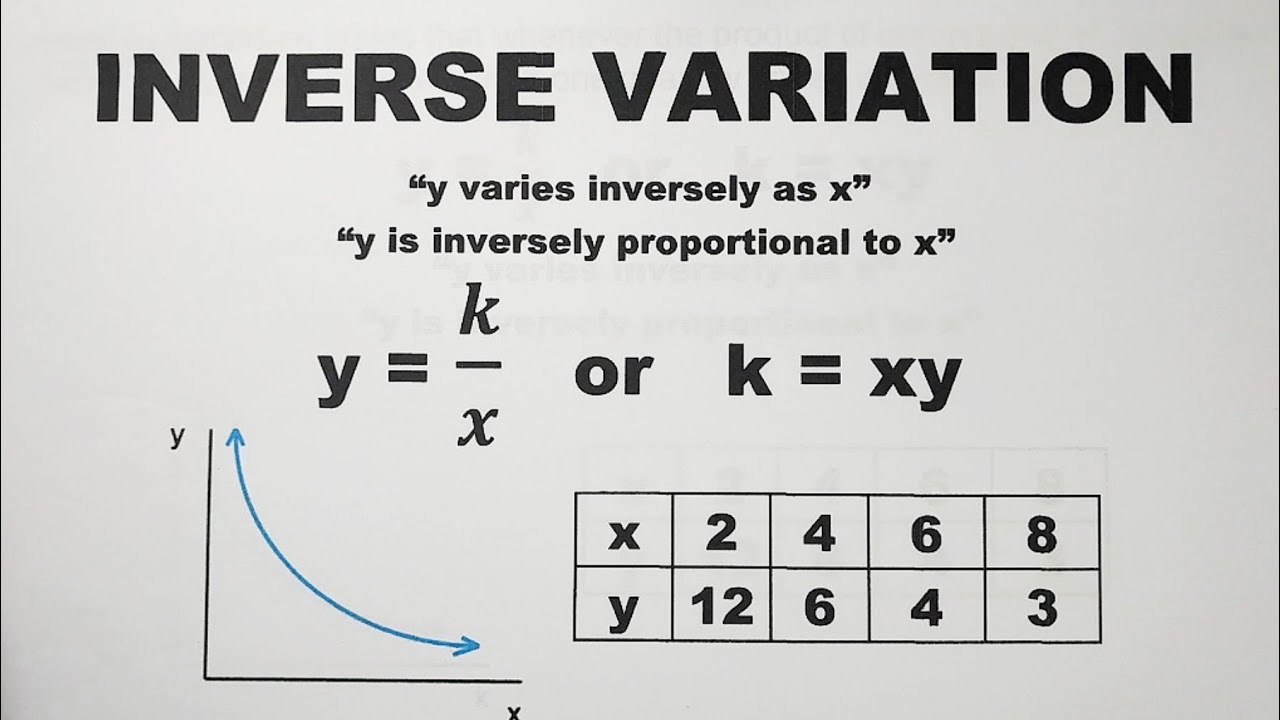Joint Variation | Grade 9 Second Quarter
Summary
TLDRIn this instructional video, Teacher Emma introduces the concept of joint variation, a type of mathematical relationship where one variable varies directly as the product of two or more other variables. She explains the method for translating real-world problems into equations, finding the constant of variation, and using it to solve for unknown values. Through step-by-step examples, including scenarios with areas, volumes, and the mass of a rectangular sheet, she demonstrates how to apply joint variation in practical situations. The lesson emphasizes clarity, methodical problem-solving, and the importance of keeping track of units, making it accessible and educational for learners.
Takeaways
- 😀 Joint variation involves a variable that varies directly as the product of two or more other variables.
- 😀 The general formula for joint variation is a = k * b * c, where k is the constant of variation.
- 😀 To solve joint variation problems, first translate the word problem into a mathematical equation.
- 😀 The constant of variation (k) is found by substituting known values into the joint variation equation and solving for k.
- 😀 In problems involving powers, such as y varying jointly as x and z², make sure to square or cube the appropriate variables when substituting.
- 😀 Once the constant of variation is known, it can be used to calculate unknown values of the dependent variable for new inputs.
- 😀 Applied problems often include units, so always include and track units like grams, centimeters, or other measurements.
- 😀 For multiple variables, ensure each variable is properly substituted before performing arithmetic to find the constant or unknown value.
- 😀 Step-by-step calculation helps prevent mistakes, especially when dividing to solve for the constant of variation.
- 😀 Joint variation can be applied in various scenarios, such as areas, volumes, or mass, where multiple quantities influence the outcome.
Q & A
What is joint variation?
-Joint variation describes a situation where one variable varies directly as the product of two or more other variables, with a constant of variation, k.
How is joint variation represented mathematically?
-If a variable a varies jointly as b and c, it can be represented as a = k * b * c, where k is the constant of variation.
What is the purpose of using joint variation?
-Joint variation helps solve problems involving three or more variables simultaneously, such as calculating areas, volumes, or other physical relationships.
How do you find the constant of variation, k, in joint variation problems?
-Substitute the known values of all variables into the equation, then solve for k by isolating it on one side of the equation.
In Example 1, if a = 36, b = 3, and c = 4, what is the constant of variation k?
-The constant of variation k is 3, and the equation of the relationship is a = 3bc.
In Example 2, what equation represents y varying jointly as x and z squared?
-The equation is y = k * x * z^2, where k is the constant of variation.
How do you calculate y for new values of x and z in Example 2?
-Substitute the known k and the new values of x and z into the equation y = k * x * z^2. For x = 2 and z = 3, y = 4 * 2 * 9 = 72.
In Example 3, how do you determine the mass of a rectangular sheet of wood using joint variation?
-Use the equation m = k * l * w, where l is length, w is width, and k is the constant of variation. Substitute known values to find k, then use it to calculate mass for new dimensions.
What is the value of k in Example 3 when the mass is 200 g, length is 20 cm, and width is 10 cm?
-The constant of variation k is 1 g/cm².
What is the mass of the sheet in Example 3 when the length is 15 cm and width is 10 cm?
-The mass is 150 g, calculated using m = 1 * 15 * 10.
What is the general approach to solving joint variation problems?
-1. Translate the word problem into a mathematical equation. 2. Identify known variable values. 3. Solve for the constant of variation k. 4. Use the equation to find unknown variables or new values.
Why is it important to include squared or higher power terms in joint variation problems?
-Because the variable may vary jointly with the square or higher powers of another variable, which directly affects the equation and the calculations.
Outlines

Dieser Bereich ist nur für Premium-Benutzer verfügbar. Bitte führen Sie ein Upgrade durch, um auf diesen Abschnitt zuzugreifen.
Upgrade durchführenMindmap

Dieser Bereich ist nur für Premium-Benutzer verfügbar. Bitte führen Sie ein Upgrade durch, um auf diesen Abschnitt zuzugreifen.
Upgrade durchführenKeywords

Dieser Bereich ist nur für Premium-Benutzer verfügbar. Bitte führen Sie ein Upgrade durch, um auf diesen Abschnitt zuzugreifen.
Upgrade durchführenHighlights

Dieser Bereich ist nur für Premium-Benutzer verfügbar. Bitte führen Sie ein Upgrade durch, um auf diesen Abschnitt zuzugreifen.
Upgrade durchführenTranscripts

Dieser Bereich ist nur für Premium-Benutzer verfügbar. Bitte führen Sie ein Upgrade durch, um auf diesen Abschnitt zuzugreifen.
Upgrade durchführenWeitere ähnliche Videos ansehen

Inverse Variation - Constant of Variation and Equation - Grade 9 Math Second Quarter

Marginal and conditional distributions | Analyzing categorical data | AP Statistics | Khan Academy

Combined Variation - Equation and Constant of Variation - Grade 9 Math

Direct Variation - Basic Introduction | Algebra

Regression and R-Squared (2.2)

INVERSE VARIATION || GRADE 9 MATHEMATICS Q2
5.0 / 5 (0 votes)
